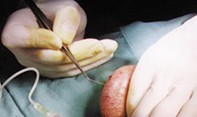Peer Reviewed
Feature Article Obstetrics and gynaecology
The wanted pregnancy – assisted conception in Australia
Abstract
The world’s first human IVF ‘success’ recently celebrated her 21st birthday and we can now say the technology has come of age. With almost 25,000 babies born in Australia as a result of IVF and related technologies, it seems appropriate to review the last two decades, examine current practice and speculate on future possibilities.
Key Points
- Assisted reproductive technology (ART) now results in more than 1% of births in Australia.
- Gamete intrafallopian transfer (GIFT) is no longer as successful as standard IVF and difficult to justify.
- There is an expanding role for preimplantation genetic diagnosis (PGD) in areas beyond simple sex selection for family balancing.
- Appropriate genetic screening and counselling are an important part of every modern assisted conception program.
- It is very important that couples have realistic expectations about success before embarking on treatment.
- There is increasing reassurance that the children resulting from intracytoplasmic sperm injection (ICSI) are no more likely to have major abnormalities than children conceived in the normal manner. However, genetic sperm problems may be transmitted.
- The treatment of infertility must address emotional and wider family and sociological aspects as well as the medical and scientific aspects. Support from a knowledgeable family physician can be crucial.

